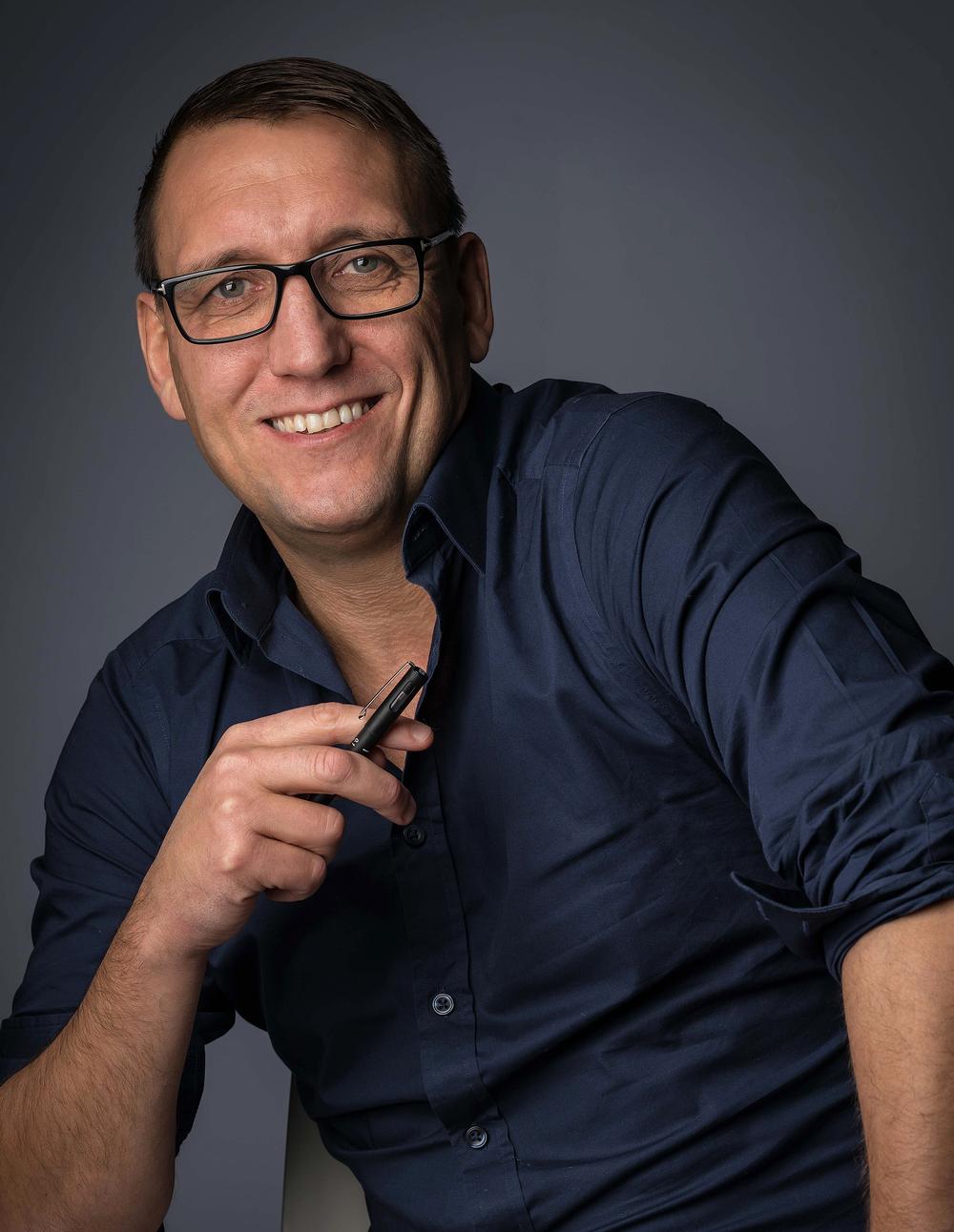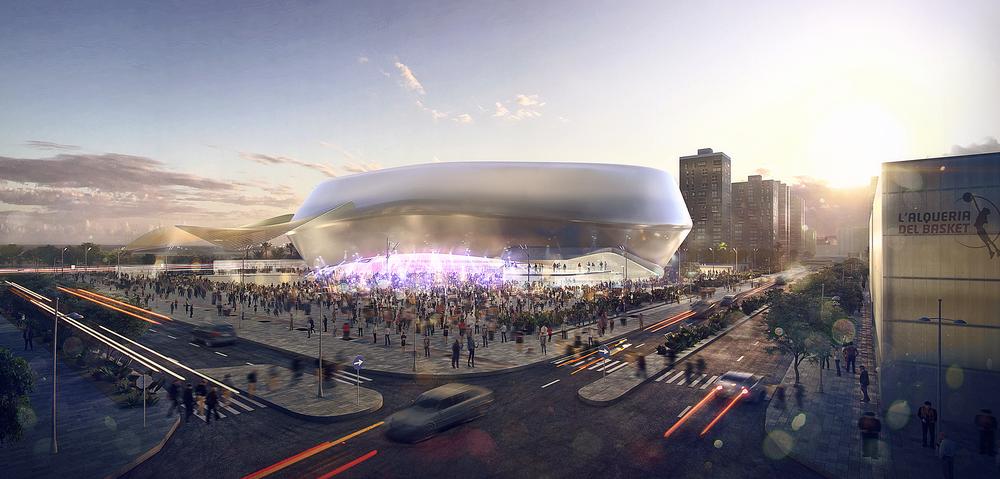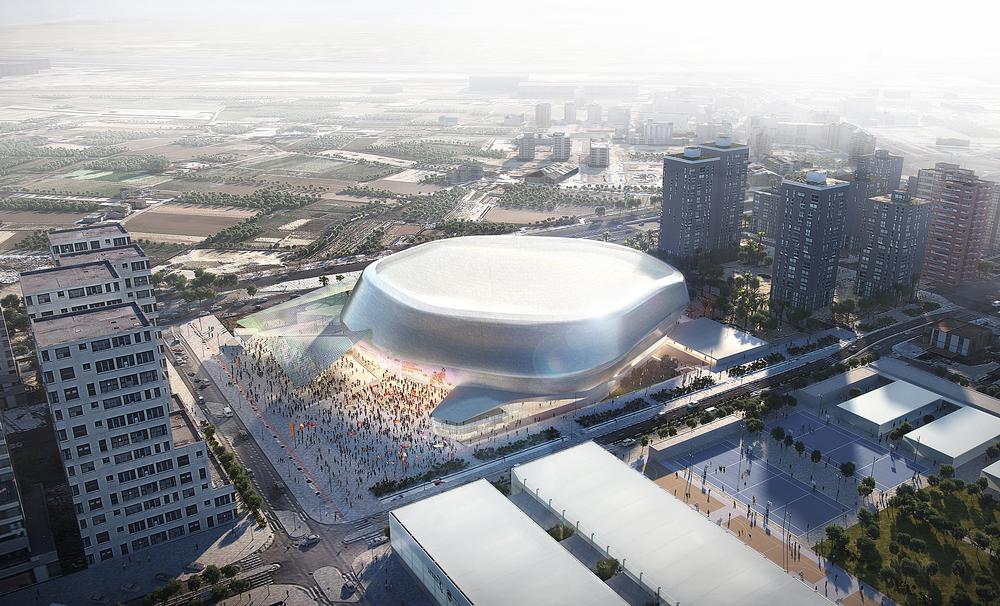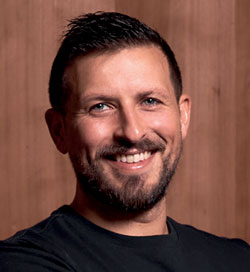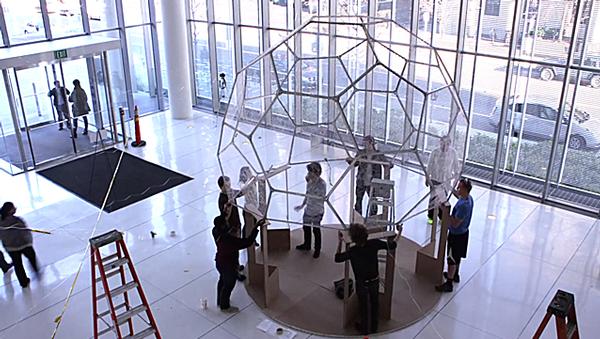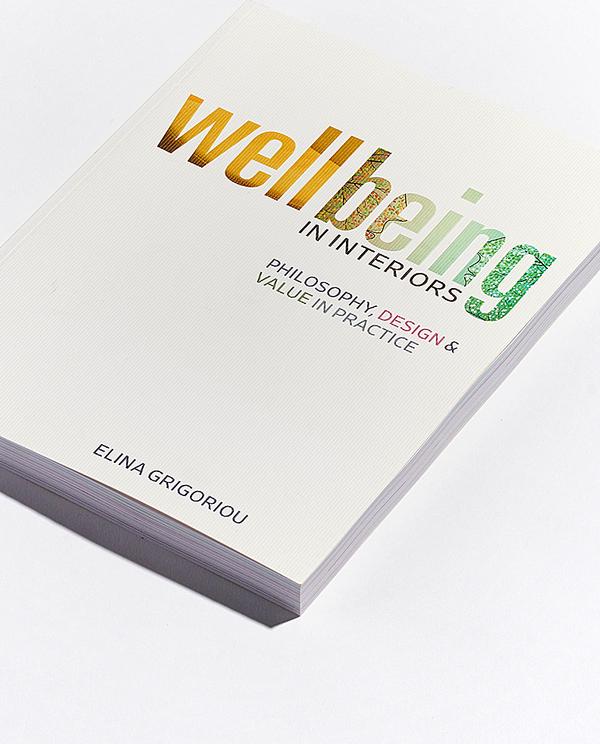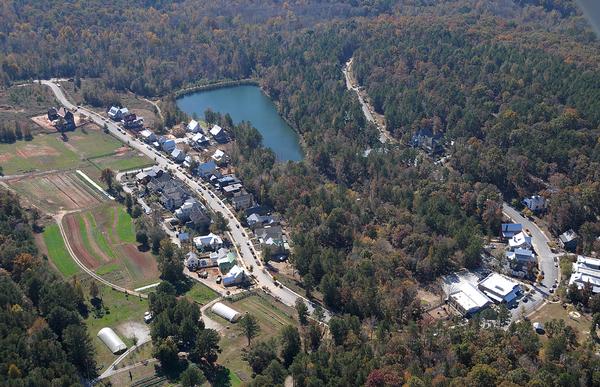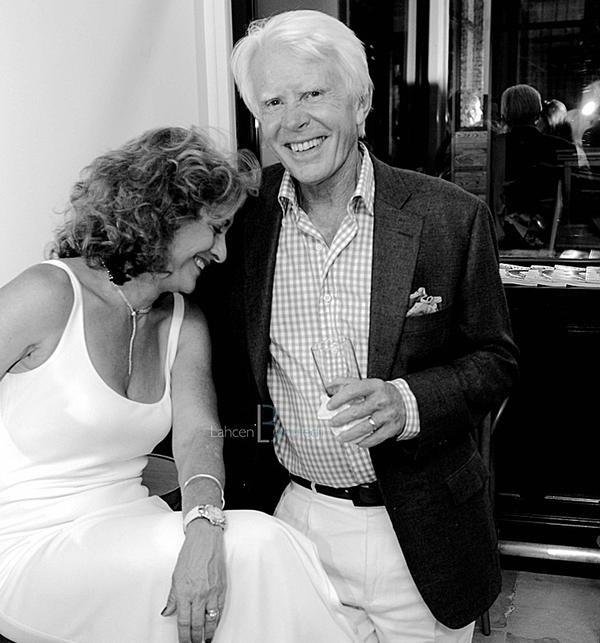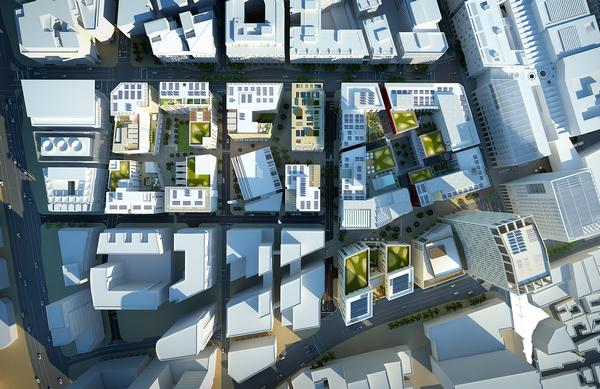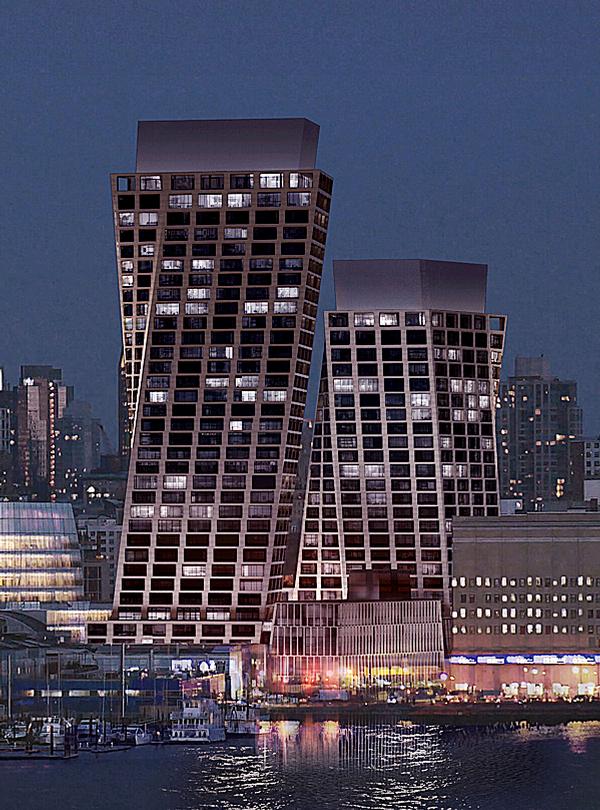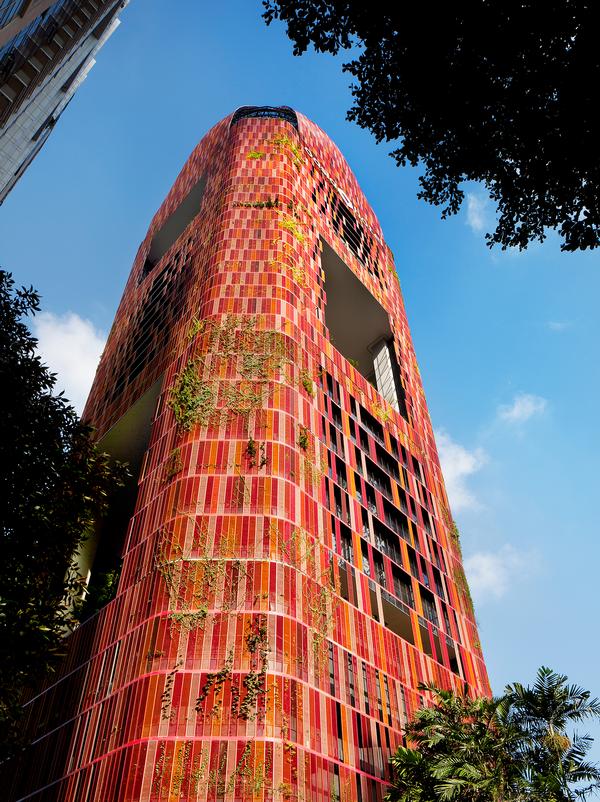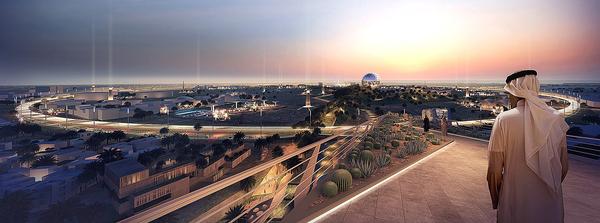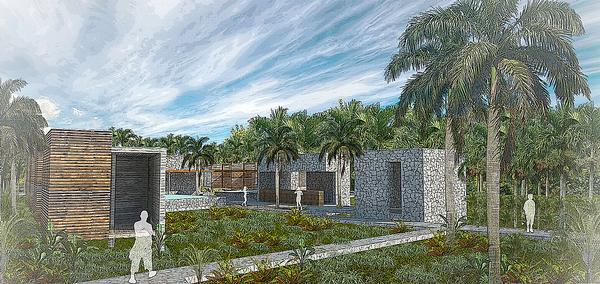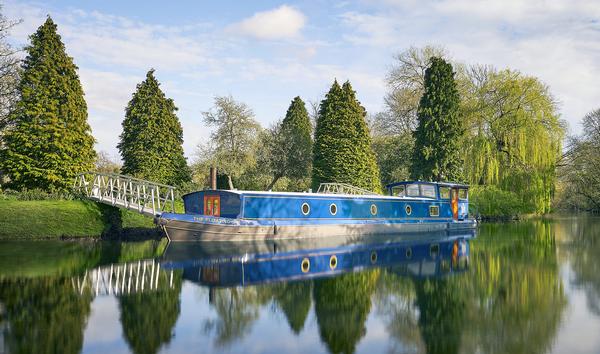Profile
John Rhodes
HOK have been appointed to design a highly flexible arena that can host sporting, cultural and music events and will help regenerate Valencia’s downtown. Tom Walker spoke to HOK’s Sports + Recreation + Entertainment’s John Rhodes
Spanish billionaire Juan Roig last year announced plans to develop a multi-use sports arena in his hometown of Valencia, Spain. As well as the new home for Valencia Basket – a professional basketball team owned by Roig – the €192m (US$221m, £170m) venue is set to become the region’s premier indoor events destination.
Roig has set up an enterprise, called Licampa 1617, specifically for the project and has appointed sports architects HOK to design the arena. The arena is part of a plan to grow the profile of Valencia Basket and there are also plans to hold National Basketball Association (NBA) games at the venue.
HOK has been tasked with creating a multi-purpose, flexible design and will work in partnership with local architecture practice ERRE on the project. The new arena is set to open in 2022.
Could you tell us about Valencia Basket’s new arena?
Licampa 1617 has ambitious plans for the club. The team’s current home venue – Pavelló Municipal Font de San Lluís – only has a capacity of around 9,000 spectators, so the new 15,000-seater arena will have a significantly larger capacity and is part of a long-term sustainable strategy for the club.
Licampa wants to create not just a new home for the club, but a venue which can host a wide range of events – from family entertainment and concerts to other sports.
This will allow the building to generate revenue and support investment in the basketball team.
You’re working with local architects ERRE Arquitectura on the project – what can you say about them?
They are a wonderfully enthusiastic and energetic practice who have done some great projects in Valencia. We really enjoy working with them and it’s been wonderful to get a team that bonds well.
All successful projects are the result of a team endeavour, so if you can get a team that works well and is balanced you’ll get a much better product. It’s great for us to have the mix of a local partner and our global expertise.
Can you describe the design of the arena?
We are still at an early stage of the design process, but at the heart of the brief is a desire to create a wonderful customer experience. We’re looking to create a flexible, sustainable venue with a range of premium seating products.
The arena will be built on a gateway site, next to the main road into the city from Alicante – a very prominent position in the city. The location will influence some of the design aspects, as the goal is to create a meaningful building with a civic presence.
The club has already built a training facility and academy next to where the new arena will sit. The academy has a focus on developing young players and this will fit perfectly with the strategy of creating a long-term, sustainable plan for the club, not just in terms of player generation, but also community involvement.
The site sounds like an interesting one
It really is and it offers great opportunities.
Urbanistically, the arena project will kick start a process that will see the area evolving into a sporting district. As well as the arena and the training academy, there are municipal playing fields and training facilities for rugby next door, so the arena will become the focal point of all those combined elements.
In a larger, regeneration sense, the area in which the arena sits has not, historically, been among the city’s wealthiest districts. So the project will bring a different character and a vibe to the area.
The brief is for a multi-use venue – how flexible will the design be?
Having a resident basketball team means we need to create a great environment for basketball fans. We also need to create flexibility, so the venue can operate in many different configurations – be that for large-scale stage shows or smaller, intimate music concerts.
Much of it will be to do with the seating bowl. Ideally, you want to be able to tailor the seating for each specific environment and event that the arena will cater for.
In terms of innovation we need to deliver an arena which will evolve with the market over a long period of time – and evolve with the content of the market. The event mix at modern arenas is constantly changing and we’re seeing things like e-sports come into play, so we need to think about how we can adapt to that.
So the challenge is to not just scale up capacity – but to scale down too?
Yes. There’s now an emerging market for smaller gigs. The ability for the Valencia venue to adapt to smaller configurations – for anything between 3,000 and 7,000 – will be key.
From an architectural point of view, that means that the arena’s design has to adapt to cater for smaller acoustic gigs.
What we want to provide is a truly authentic experience, so the acoustics and ambience need to be right even when you’re not using the entire building.
Building in the ability to cater for those smaller gigs – and the likes of e-sports – is becoming a way of future-proofing a venue.
Are there any tricks to get that future proofing right? How do you ‘look into the future’ and identify trends?
Clearly you need to keep your finger on the pulse. You need to know what operators are doing and where they are going, but you could say that about any architecture.
It can be tricky, because the industry will evolve in a way that you can’t always imagine – who knows, chariot racing might come back – but the ability to be flexible is key.
The reality is that arenas are far more complex than stadiums, because with stadiums you usually have a very fixed field of play, designed for a particular sport – such as football or rugby.
With an arena you have to envisage where the focal points might be in the future and make sure the bowl can actually adapt to that functionality. Some of the key factors include having the right mix of retractable and fixed seating and creating the right technological frameworks that allow the introduction of additional technology in the future.
Typically, when we are designing arenas, we explore a wide range of configurations and scope the flexibility associated with all sorts of weird and wonderful events – such as the Walking with Dinosaurs arena show. You need to make sure you can get your brontosaurus into the service yard!
How would you define good arena design?
Design should always be underpinned by the experiences people have. As venue architects, we need to focus on the individuals and the experiences they will have at the venues we design.
In some ways arenas – and to certain extent stadiums – are contraindicated, because we’re looking to create an intimate personal experience within the context of a macro environment where there are thousands of people.
Perhaps the only other super-sized buildings which gather people like sports venues do are airports – and airports aren’t historically always associated with providing the most enjoyable experiences.
So while you want to create an arena which offers an intimate human experience, it’s very much about the celebration of people coming together. If you can manage that well, a venue can become very special. That’s the cornerstone for any truly great venue – to find a way to solve that contraindication.
Roig is a native of Valencia and a passionate basketball fan. He is the president of Mercadona, the Spanish supermarket chain, which he built into a multi-billion euro business in the 1980s and 1990s. Forbes estimated his net worth (in July 2018) at around US$4.3bn.
Roig is the owner of Valencia Basket and has ambitions to develop the club into a leading European force. Roig has set up a company – Licampa 1617 –specifically to help develop a new arena for the team.
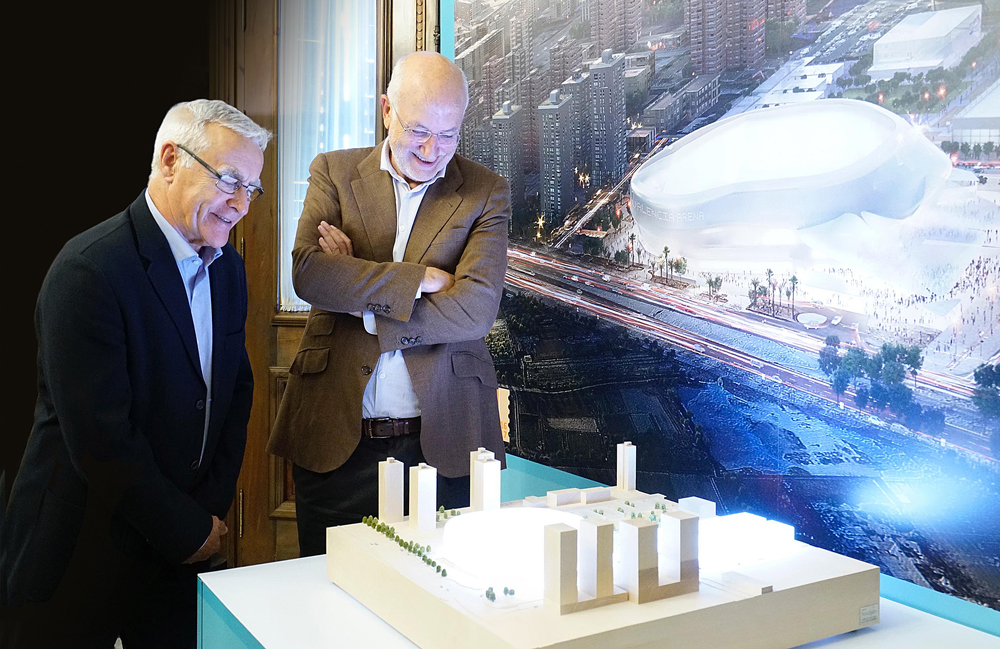
Bionic leaves, breathable metals and selfgrowing bricks... Biomimicry in architecture has come a long way. Christopher DeWolf takes a look at the latest advances



